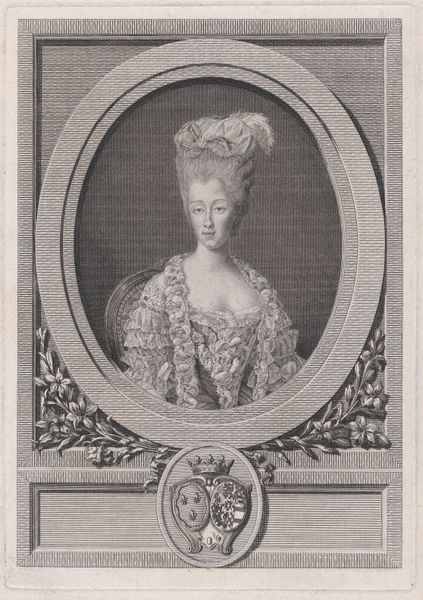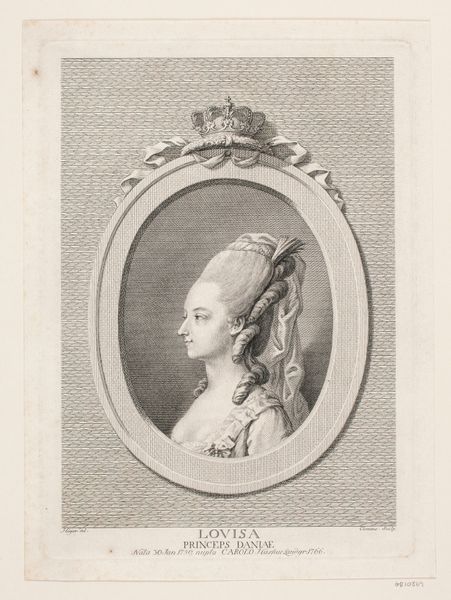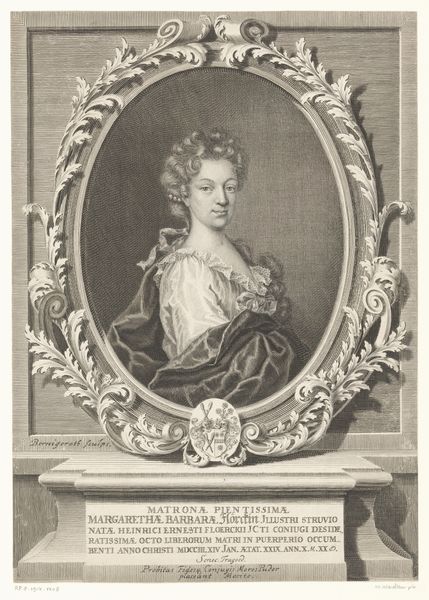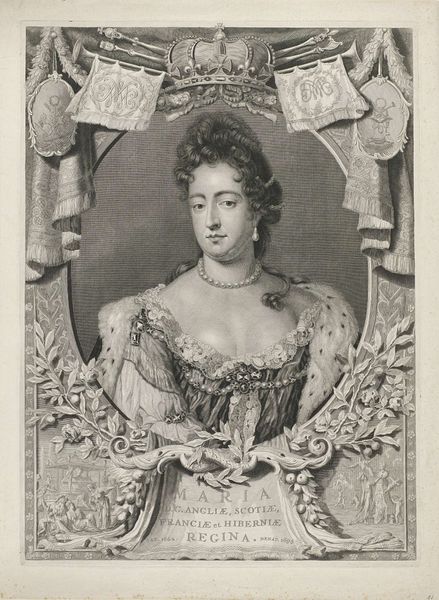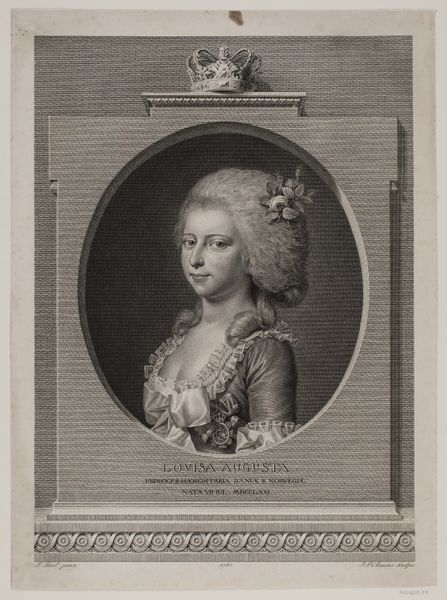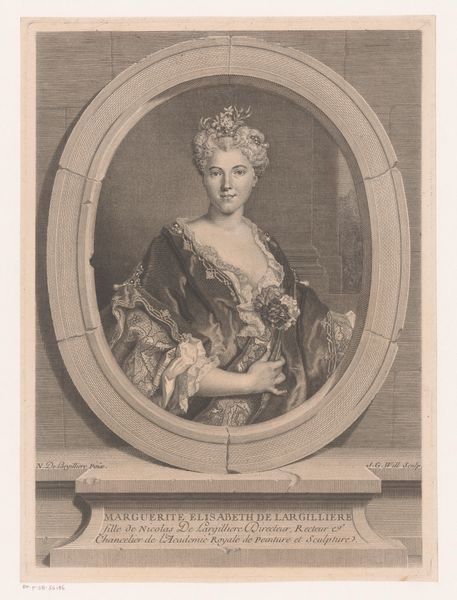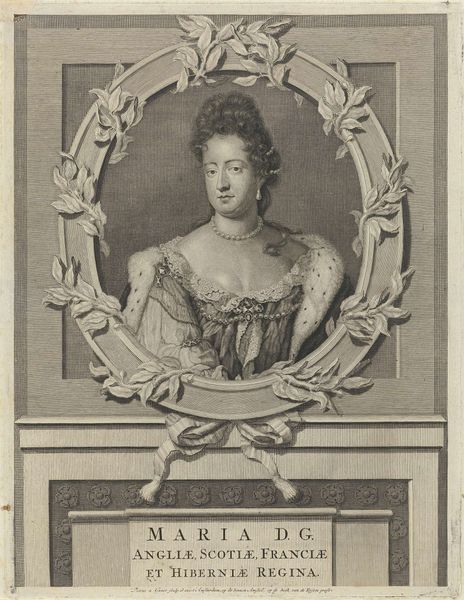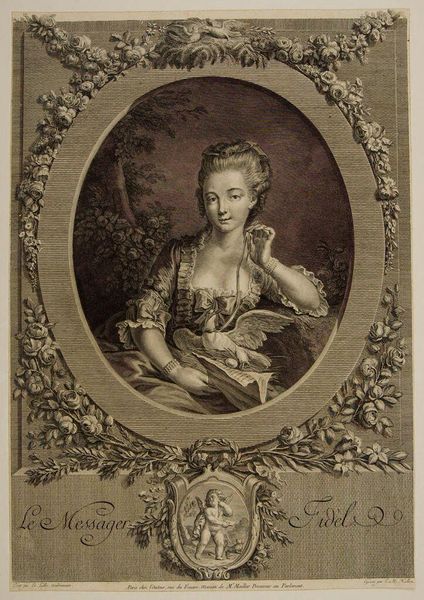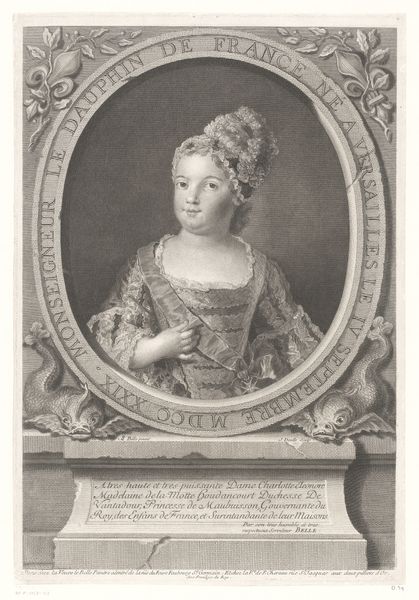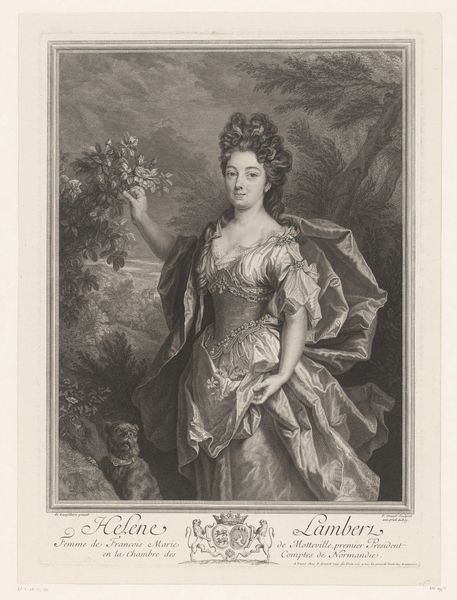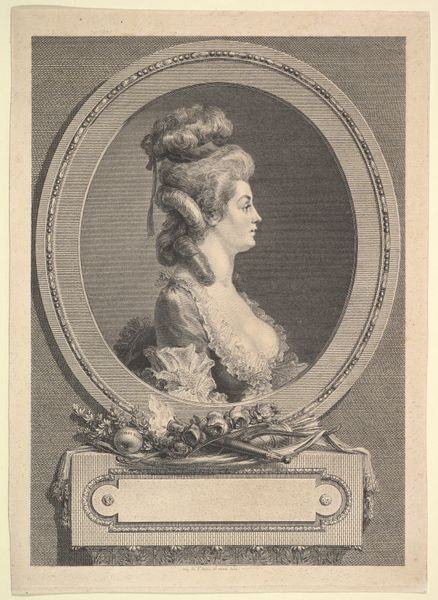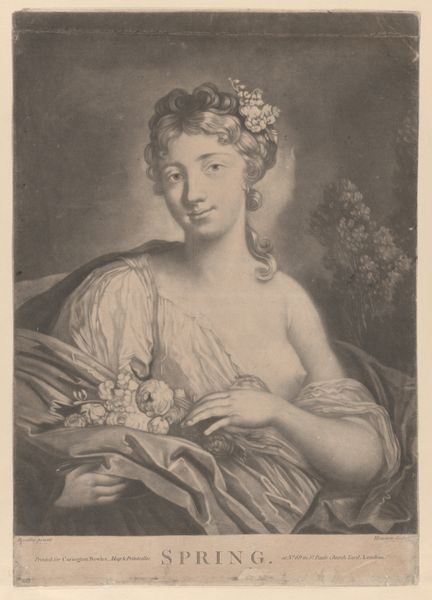
Portrait of Marie Joséphine of Savoy, Countess of Provence 1774
0:00
0:00
Dimensions: Sheet: 16 15/16 × 11 9/16 in. (43.1 × 29.3 cm) Plate: 10 1/2 × 7 3/8 in. (26.7 × 18.8 cm)
Copyright: Public Domain
Editor: So this is "Portrait of Marie Joséphine of Savoy, Countess of Provence," made in 1774 by Louis Jacques Cathelin. It's an engraving. It feels very formal and ornate to me, with all the floral details. What jumps out at you? Curator: This print speaks volumes about the role of portraiture in solidifying the Bourbon monarchy's image. Note how Marie Joséphine is presented not merely as an individual, but as a symbol of power and lineage. What can you tell me about the visual cues which confirm her elite status? Editor: Well, the elaborate dress and hairstyle, obviously. And the floral decorations, along with the coat of arms at the bottom, give her that... Curator: Exactly! The dress isn’t just clothing; it's a statement of wealth and authority. And the coat of arms grounds her in a history. But consider *why* such images were circulated as prints. It's about constructing a specific image for public consumption, particularly for those who wouldn’t have direct access to the royal court. Do you see evidence here of Rococo ideals beyond simple opulence? Editor: Yes, maybe in the...the framing? It's not just a plain square, but like, an ornate oval festooned with flowers? To me, the asymmetry says, "Rococo." Curator: A very astute observation. How might these seemingly frivolous elements contribute to the underlying message of power? Think about how this circulated, how it was used, who had access... Editor: So it wasn't just showing who she *was*, but trying to convince people that she *deserved* the power she had. The image is propaganda. I guess I always thought of propaganda as more obviously political... Curator: It’s often more subtle than we expect. Seeing these portraits as carefully crafted pieces of political communication reshapes our understanding of their original function. Editor: I never considered how actively images were used to control perception like this! Thanks for expanding my view on that.
Comments
No comments
Be the first to comment and join the conversation on the ultimate creative platform.

